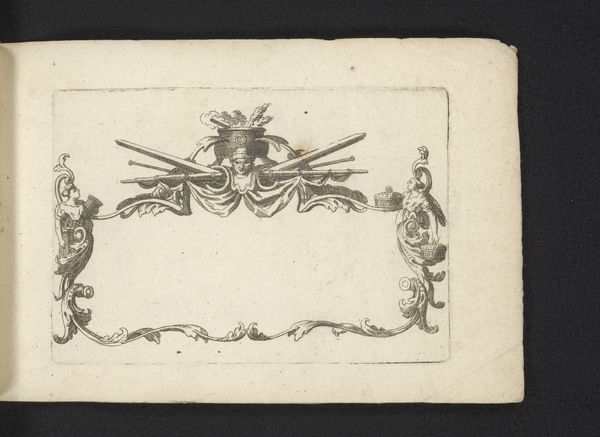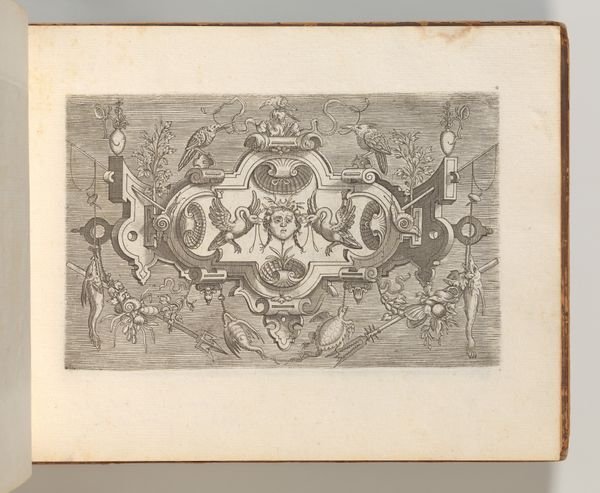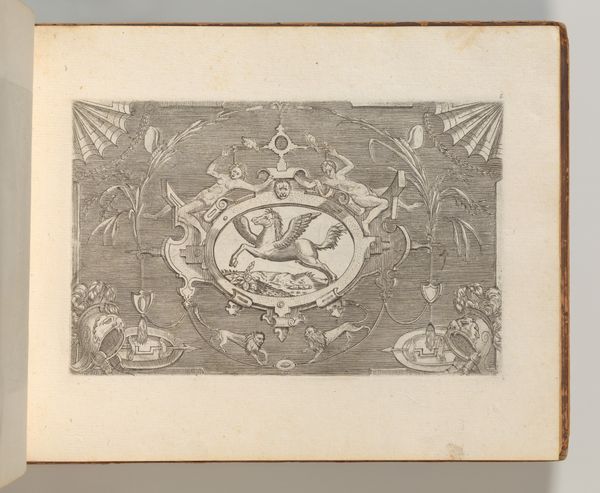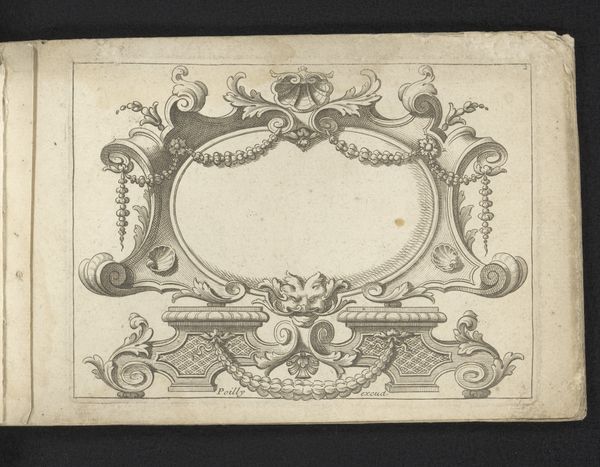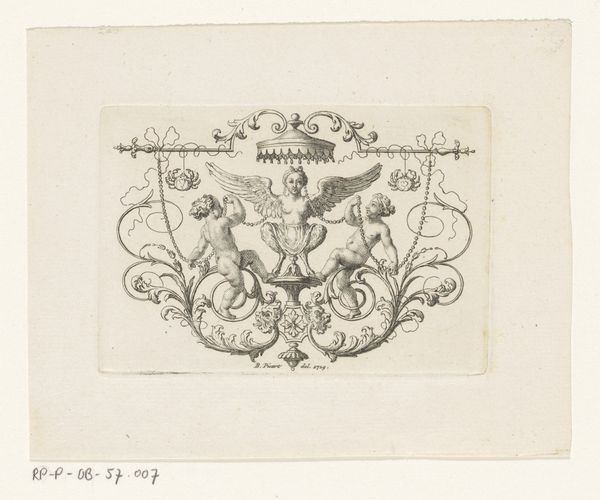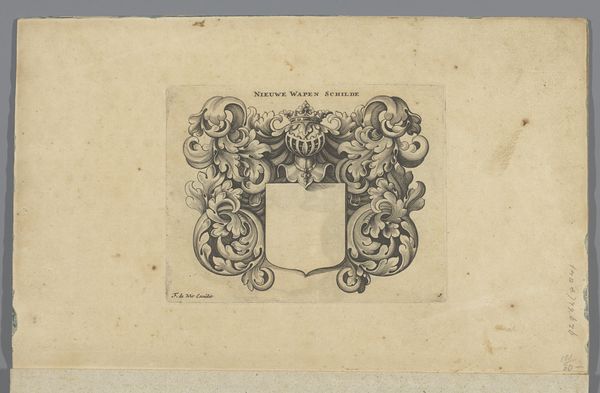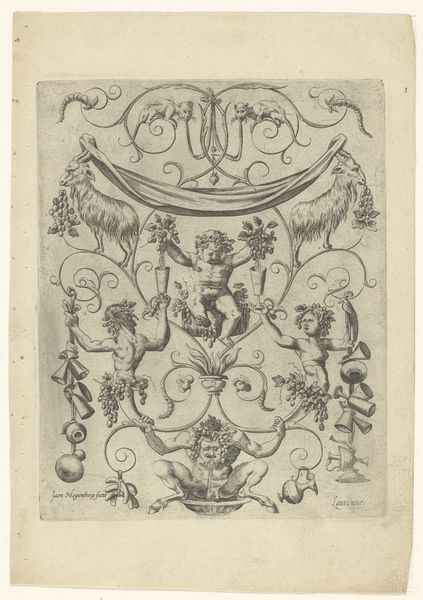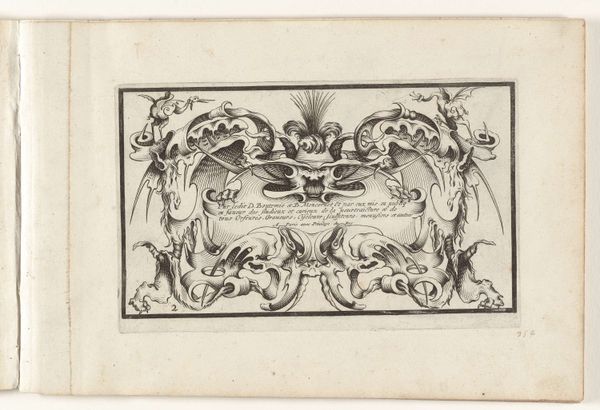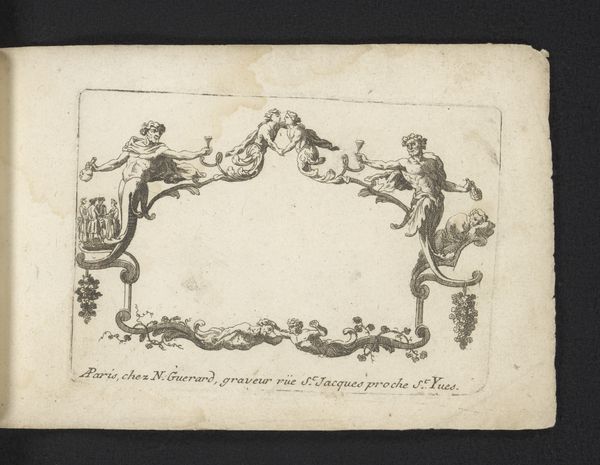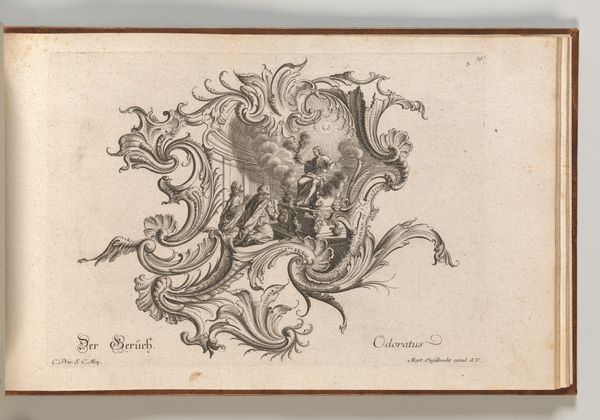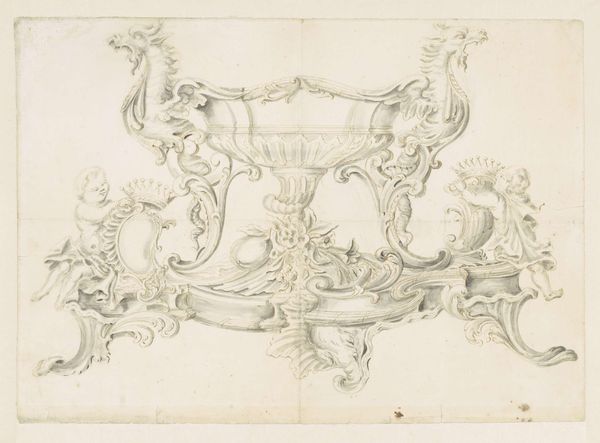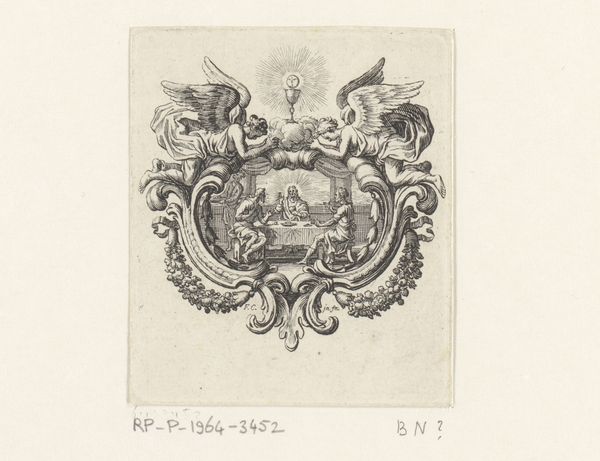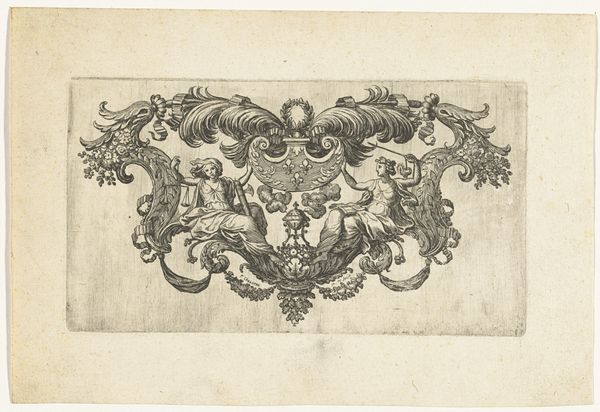
drawing, ink, pen
#
drawing
#
light pencil work
#
allegory
#
baroque
#
pen drawing
#
pen sketch
#
sketch book
#
figuration
#
personal sketchbook
#
ink
#
pen-ink sketch
#
pen work
#
sketchbook drawing
#
pen
#
history-painting
#
storyboard and sketchbook work
#
decorative-art
#
sketchbook art
Dimensions: height 90 mm, width 135 mm
Copyright: Rijks Museum: Open Domain
Editor: This pen and ink drawing, titled "Cartouche met harnas," is attributed to Nicolas Guérard, and estimated to have been created between 1658 and 1719. I’m struck by how meticulously detailed it is, almost like a little stage. How would you interpret this scene, with the armor and the musicians? Curator: Well, seeing this through a historical lens, it speaks volumes about the way power was presented and perceived in that era. Cartouches like this were frequently used as frames for displaying information – think official announcements or family crests. The inclusion of armor, drums, and military figures clearly alludes to military might, and consequently, political power. It presents an idealized view of authority, designed to impress and perhaps even intimidate. What’s particularly interesting is how this imagery was circulated and consumed – were these images primarily for the elite? Or did they serve a broader propagandistic purpose? Editor: That's a great question. It seems almost performative, like power on display for an audience. Did these cartouches often appear in public spaces, reinforcing those messages for everyone? Curator: Absolutely. While some would decorate private residences, their presence in public spaces – think city squares, governmental buildings – was crucial. It normalized a hierarchy, suggesting an unshakeable order. Consider also how the “decorative art” style, almost playful in its flourishes, works to soften the potentially harsh realities of military power. Is it successful in its objective, do you think? Editor: I see your point. The flourishes definitely make it seem less intimidating, but maybe also less… genuine? Like the power is being presented as a spectacle, rather than something inherent. I wonder if viewers at the time were as aware of the staged aspect of it all. Curator: That's precisely the kind of critical engagement we want to foster. Thinking about the public role of art, even something seemingly ornamental like this cartouche, forces us to confront how imagery can be used to shape perceptions of authority and social order. Editor: I'll definitely look at decorative arts with fresh eyes now!
Comments
No comments
Be the first to comment and join the conversation on the ultimate creative platform.
